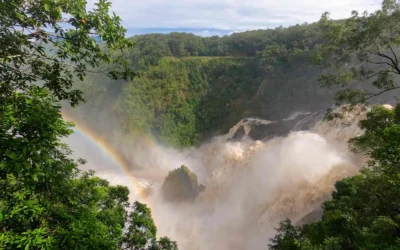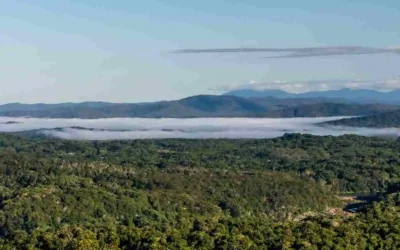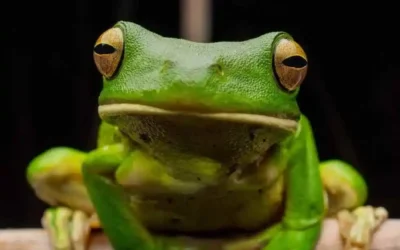Camouflage in the rainforest
The Art of Disguise
The ancient rainforest is home to a large and diverse range of animals. In nature’s never-ending battle for survival, animals are both the hunters and the hunted. Over millions of years, animals have evolved ways to keep themselves safe. A popular method is camouflage in the rainforest.
When you think of camouflage, images of army trucks and uniforms spring to mind and this is for good reason. Natural colours and patterns, like those used by the army, allow an animal to blend into their surroundings and hide.
The Spiny-Legged Katydid can camouflage itself so well that often Skyrail guests walking past at Red Peak will miss them completely. Have a look at these photos taken recently at Skyrail to see just how well they can hide.
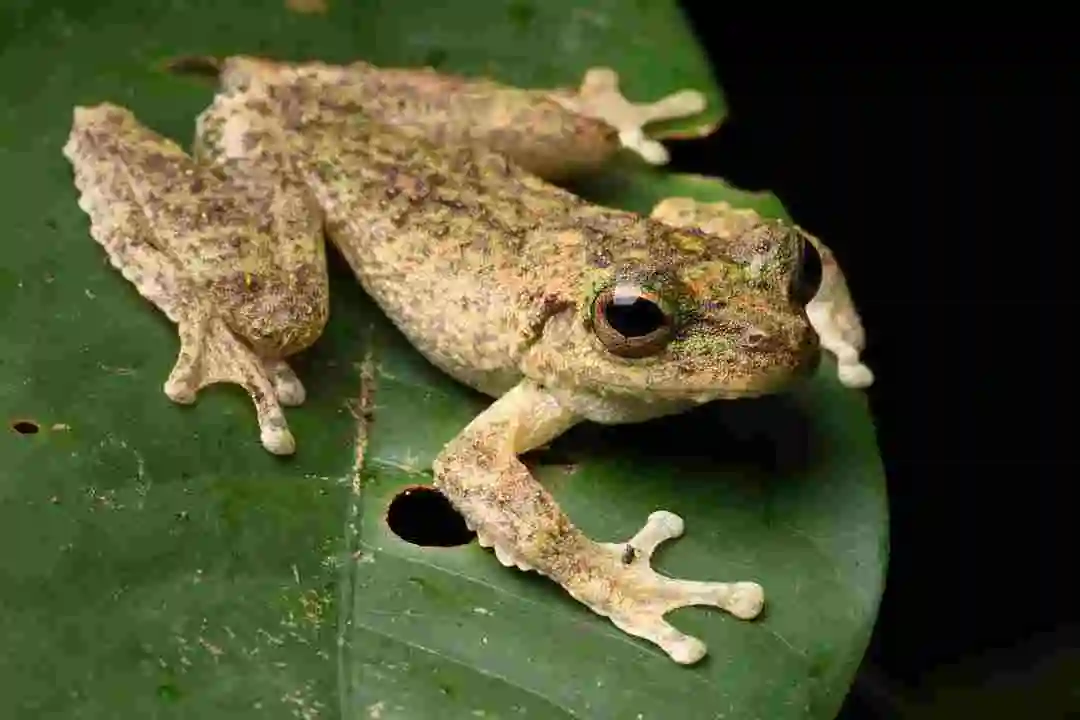
Green-Eyed Tree Frog, while not in hiding. Photo by Tim Hackwood.
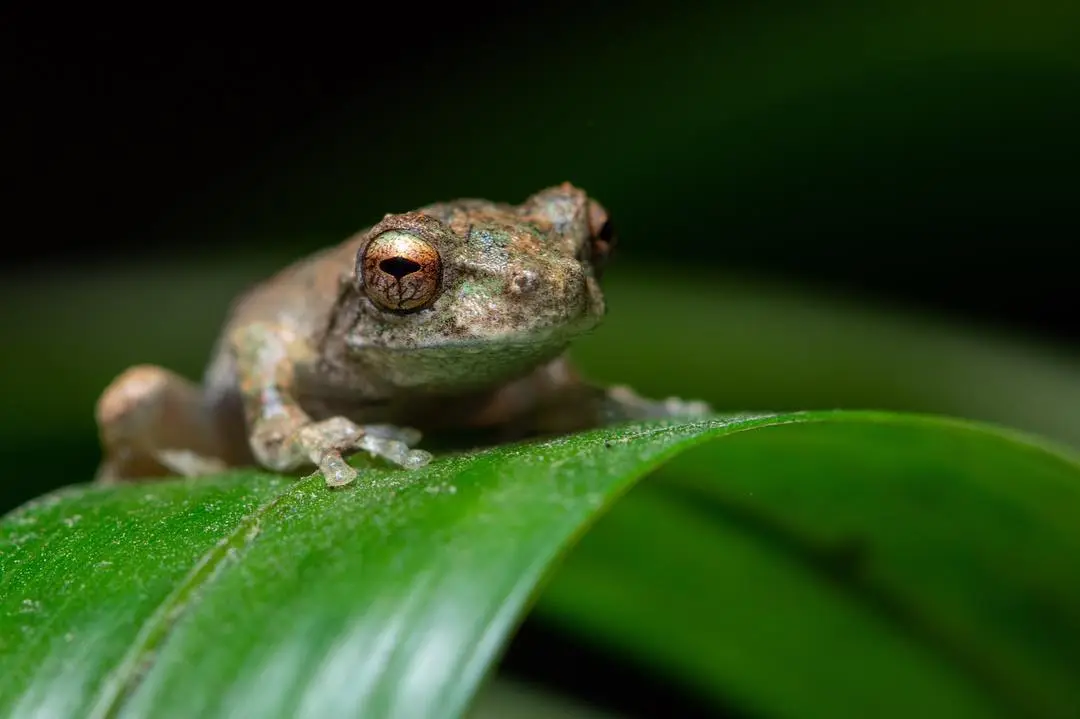
Endemic Kuranda Tree Frog, while not in hiding. Photo by Tim Hackwood.
Camouflage by Shape
Certain species mask themselves, not only in colour but in their shape.
The Green-Eyed Tree Frog, while having mottled green/grey, rough textured skin to match the bark on which is lives, has also developed a fringe of frilly skin around the edge of its body. The frilly skin breaks up its visual outline and helps the frog blend even more into the bark of the trees. Not only does this aid in hiding from potential predators, but its camouflage assists the frog in ambushing insects to feed on as well.
Keep your eyes pealed, the Green-Eyed Tree Frog calls Skyrail’s Red Peak their home.
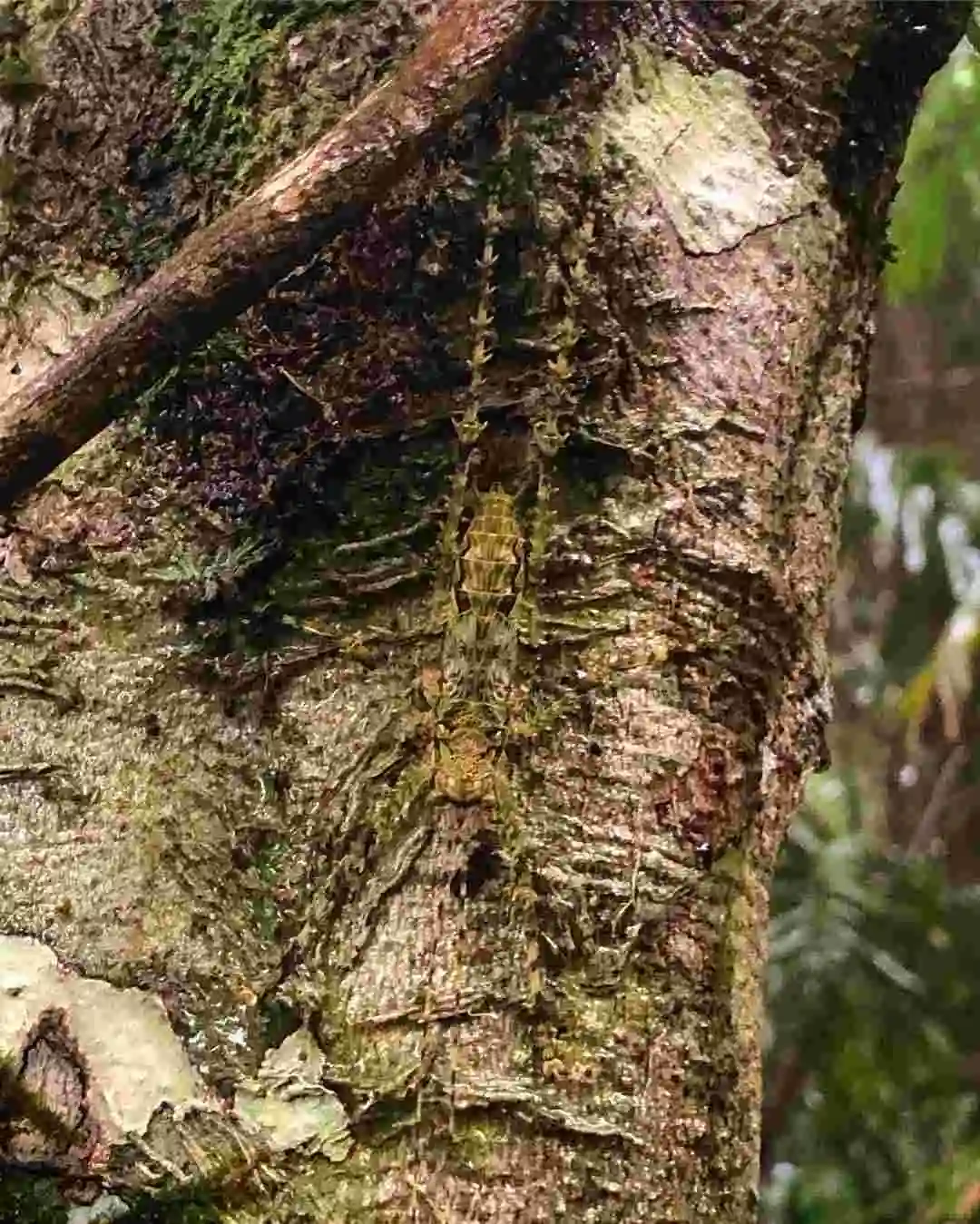
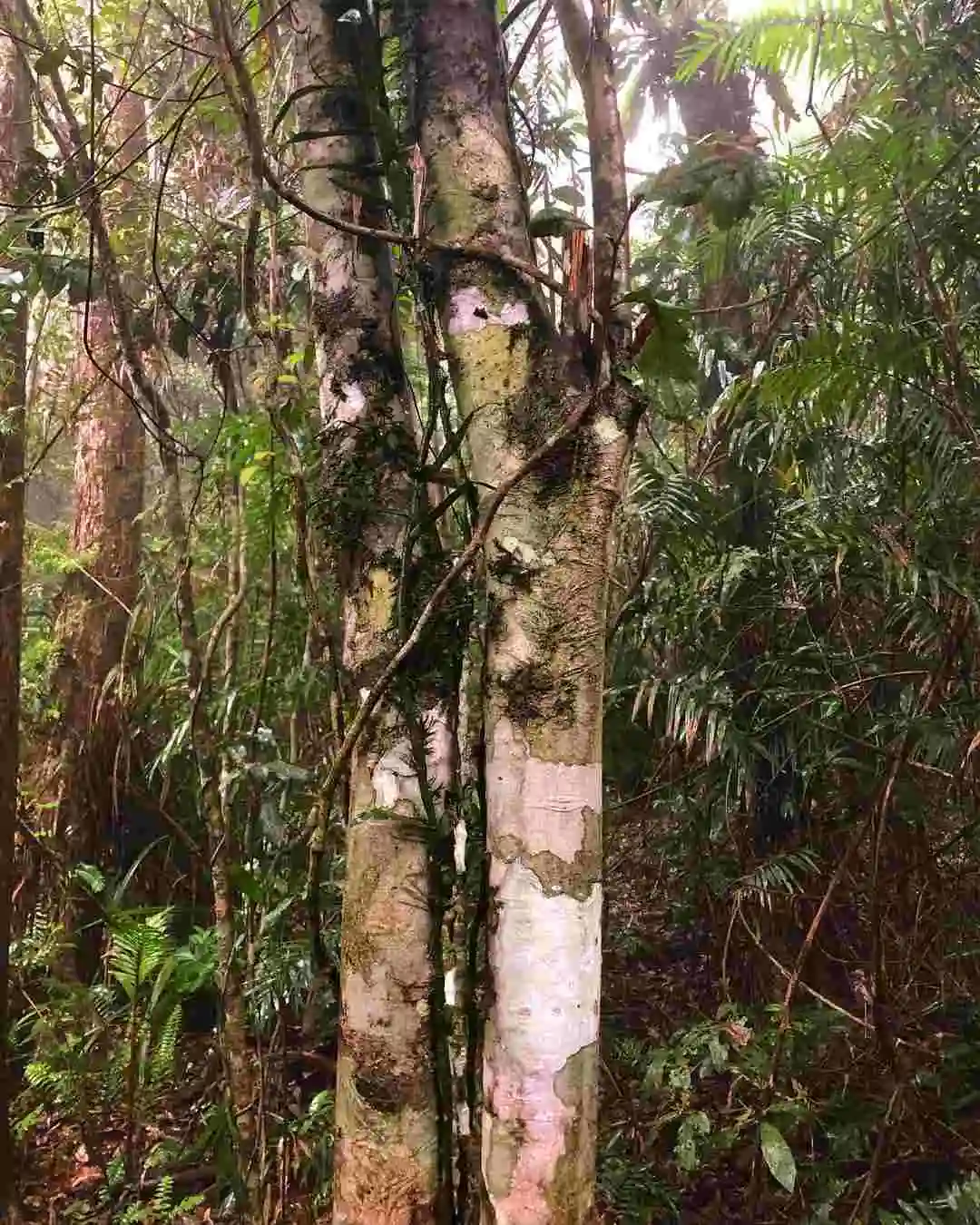
Camouflage by Mimicry
Mimicry is used as a form of camouflage. Animals and insects mimic other species in order to disguise themselves. Certain mantis species have learnt how to mimic the way ants look and walk in order to mask themselves from potential predators.
Camouflage by Reaction
The Bush Stone Curlew chicks are striped which helps them blend in with the grass and shadows. When threatened, the chicks react by laying their whole body flat on the ground. They blend in so perfectly when they do this it would be very easy to unknowingly step right over them.
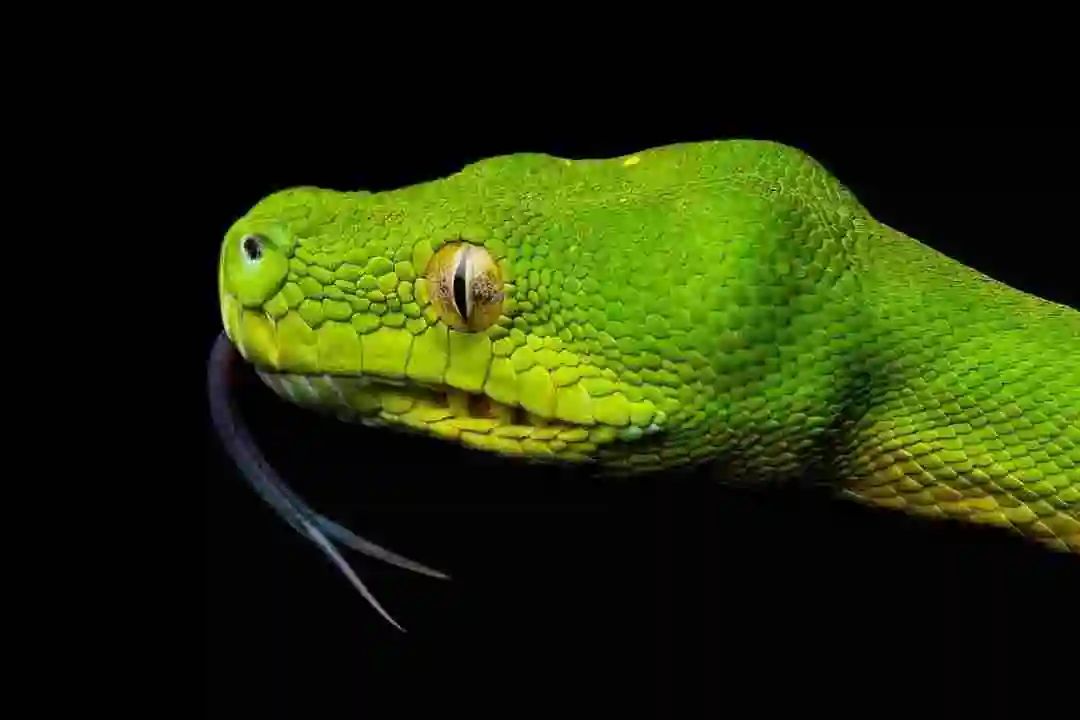
Green Tree Python. Photo by Tim Hackwood.
Camouflage is Impressive
One thing is definite, the way nature has evolved to use camouflage to protect themselves is certainly impressive. While the hunted need to use more than just camouflage to protect themselves, it is an extremely useful attribute to stay safe and thrive in #TheAncientRainforest.
Learn more about camouflage on a complimentary ranger guided tour next time you visit the ancient rainforest with Skyrail Rainforest Cableway.

